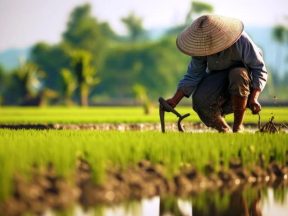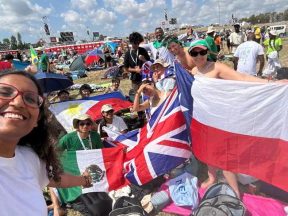They share too many interests to engage in direct conflict over Syria. But there are many risks.
After a six-hour long summit in Moscow last March 5, Presidents Putin and Tayyip Erdogan adopted a joint document, reaffirming their commitment to the ‘Astana format’, announcing a ceasefire. The summit became necessary after Syrian government forces, fresh from engaging Tahrir al-Sham militants in Idlib, were challenged by the Turkish army, which resulted in the death of 36 Turkish soldiers. In retaliation, Turkey attacked the Syrian army, claiming that it had killed some 300 Syrian military personnel, and destroyed several military vehicles.
Almost a month later, the tentative agreement to address the spiraling tensions in the Syrian province of Idlib appears to have held.
This situation follows an ongoing civil conflict which has entered its tenth year. Tensions began on March 15, 2011 and have not subsided since then. In this context, Turkey has placed itself alongside the rebels, whose goal is to overthrow the Assad regime. The latter, in turn, is supported by Moscow. In addition, Ankara has control of more than 12 posts in Idlib Governorate alone, the last stronghold placed under the control of opposition forces and at the center of a violent offensive since April 2019. Before the March 5 truce, Ankara had started the “Spring Shield” operation, urging Assad’s forces to withdraw from the de-escalation area in north-west Syria. The new offensive followed the death of about 34 Turkish soldiers, died of a Syrian raid on Idlib on February 27. An episode that had feared a further exacerbation of tensions, although both Ankara and Moscow had spoken out against a direct conflict on Syrian soil.
Indeed, even as some militias have tried to prevent the joint patrols from operating, in a significant display of Ankara’s commitment, Turkish military commanders have stated they would neutralize the radical elements that have obstructed the joint Russian-Turkish patrols. The militias have been especially active in targeting traffic along a key six-kilometer long section of the Aleppo-Latakiya M4 highway to ensure the movement of security and humanitarian traffic. Local residents, for their part, have set up roadblocks and set fire to tires on the highway to prevent the Russian and Turkish convoys from moving. To avoid escalations, the Russians and Turks have agreed to reduce the area to be monitored, citing “security reasons”, as both expect the protests to continue. In fact, the many local inhabitants, have close ties to the militias (under the names Jabhat Ansar al-Din, Jabhat Ansar al-Islam or Ansar al Tawheed) who are fighting against the Syrian army.
For all of Erdogan’s grandstanding, the Turkish leadership appears to have changed course in Syria. Its enemy is no longer Damascus. And the Islamist militias know this. That’s why the rearmed groups, isolated in Idlib as part of the Astana process in 2017, no longer appear to be following orders from Turkey, which used them as a proxy. And this is the weak link in the agreement.
If the joint patrols are stalled, Russia could decide to act more directly, and there’s certainly a high risk of this happening and breaching the accord. The risk is high because, by challenging the militias militarily, Turkey would terminate any chance of cooperation with the militias in key areas of support within the context of Operation Spring Shield, launched early in 2020 with the aim of backing those very militias. And, more urgently, fighting the militias would trigger a new wave of refugees, which would rush toward the borders. Beyond the ‘confines’ of the agreement, the Syrian government may exploit the Russo-Turkish stalemate to focus on ‘clean-up’ operations south of Idlib toward Hama being careful to avoid the M4 highway.
But there are risks.
Under the agreement, Turkish and Russian troops would deploy joint units to patrol Idlib, one of the last remaining centers of Islamist anti-Syrian government activity. The Syrian war between the Syrian government and a variety of opposition groups and militias, including several terrorist groups, started in 2011. By 2017, with Lebanese Hezbollah, Russian and Iranian help, Damascus managed to regain a significant portion of national territory. Damascus also agreed to a ceasefire with some opposition militias (or terrorists as it calls them) with Russia, Iran and Turkey acting as guarantors in agreement reached in Astana, Kazakhstan in January 2017. The Astana agreement has served as a blueprint to achieve the end of the Syrian conflict.
But, if ending the recent escalation of violence in the northern areas of the country to encourage refugees to return to the (degraded) areas and restore some semblance of peaceful existence remain a priority, skirmishes between Turkish and Syrian troops appear to have compromised the Astana process, prolonging Syria’s agony, and risking a direct conflict between Russia and Turkey.
Nevertheless, the Russo-Turkish summit of March 5, has reaffirmed the Astana process and calmed fears of Ankara and Moscow coming to harder blows. More importantly, the Astana process helps keep afloat the notion that Syria will remain a single ‘unit’ and that it won’t be partitioned – in the manner the Sykes-Picot accords split the Middle East after WW1 – in areas of influence. The official statement from the March 5 summit deliberately professed to safeguard Syria’s national unity. The paradox of that notion is that Turkey has made it clear, it cannot afford to allow Syrian ‘unity’ to remain as it presents itself today.
Turkey’s domestic policy demands that it prevent northern Syria from serving as an operational base from where Kurdish insurgents can stage attacks into Turkey, fomenting Kurdish nationalist aspirations (and on that front, Moscow has not interfered). From a more practical and immediate perspective, Turkey also fears the influx of hundreds of thousands more refugees fleeing Syria, as Damascus’s forces take back areas occupied by anti-government militias – most of which have amassed in Idlib, and whose members and civilian backers fear repercussions from the government. Such a predicament effectively drives these populations to head for Turkey, which already serves as a refuge for some 3.5 million Syrians. Therefore, Astana’s purpose serves more the military than the social or political aspects of an eventual resolution of the Syrian conflict. There’s also a fear that a final and complete resolution of the Syrian conflict would ‘encourage’ millions of Syrians, now dispersed around the world and mostly in Europe, to return home. Therefore, the best that can be hoped from these agreements is temporary respites.
Gas and Guns
As for a contrast between Russia and Turkey itself, apart from significant economic and trade links (a gas pipeline in the Black Sea started to deliver Russian natural gas to southern Europe through Turkey in January 2020, eliminating Ukraine out of the ‘equation’), at some $17 billion in contracts signed in 2019 alone, Turkey has become one of the top five importers of Russian weapons according to Dmitry Shugaev, director of the Agency for Technical-Military Cooperation of the Russian Federation. Notably, Russia has sold its S-400 missile defense system (a competitor of the American Raytheon Patriot system), angering Washington, which canceled Turkey’s rights to acquire the F-35 jet fighter.
Ankara took delivery of four S-400 batteries, but the disagreements with Washington have opened the way for a potential Turkish acquisition of Russian Su-35 or Su-50 jets. Turkey has stressed it has not yet deployed the S-400, but the United States are not pleased, and there can be little doubt that Washington will do everything possible to derail the latest Putin-Erdogan agreement over Syria. The growing military relationship suggests that whatever happens in Syria, Moscow and Ankara have sufficiently intertwined interests, preventing them from entering into a direct conflict – despite the vastly different strategic interests in the Middle East, which remains unstable. Still, the neo-Ottoman theories that bolstered Turkey’s efforts to destabilize Syria, seeking a ‘grander’ role for itself have also waned.
The End of Neo-Ottomanism?
Since the first months of the uprising which began in 2011, President Turkey played a significant role in fomenting it, directly encouraging the formation of anti-government militias, supplying weapons and allowing the passage of fighters and munitions from its borders into Syria. Current Turkish President Recep Tayyip Erdogan, (Prime Minister when the Syrian conflict began), pursued his policy in the context of a more aggressive Turkish foreign policy which, after years of cautious isolation, adopted the geopolitical concepts of ‘strategic depth’, conceived by Ahmet Davutoglu. Davutoglu, appointed Turkish Foreign Minister in 2009, has been described as the mind Turkey’s global awakening (Foreign Policy). After the 2014 presidential election in Turkey, the winning AKP party called Davutoglu as the new prime minister, leaving Erdogan to be elected President of the Republic.
Erdogan’s swift actions against the Syrian government, leaving many observers baffled and concerned in 2011, was inspired by the theories of Ahmet Davutoglu (a University Professor) contained in his doctrine of ‘strategic depth’ as a basis for strategy. Davutoglu captured a sentiment that was emerging during the leadership of Prime Minister Turgut Ozal (1983-1989) favoring a gradual politicization of Islam, adopting in moderate form, some of the concepts of the Muslim Brotherhood. Neo-Ottomanism became more prominent as Prime Minister Recep Tayyip Erdogan adopted it as a guiding principle in the AKP (Justice and Development Party) for domestic and foreign policy. Neo-Ottomanism, not a term popular in Turkish political circles, more than a theory, marks a renewed practical impetus to revive Turkey’s presumed glorious and ambitious past, considered uncomfortable and losing for decades.
Its salient aspect is to encourage Turkey to conduct an assertive policy in all neighboring and nearby theaters, in order to project national interests based on investment and increased trade, but also military power. And Turkey’s acquisition of an aircraft carrier, marks a more aggressive posture compared to the role that Turkey played in the bipolar period of the Cold War. Thus, Davutoglu and Erdogan agreed to turn Turkey into a significant geopolitical actor to be ‘respected’ regionally and globally. Davutoglu identified eight areas to project Turkish influence: the Balkans, the Mediterranean, the Black Sea, the Caspian Sea, the Caucasus, the Middle East, the Persian Gulf and Central Asia. However, in 2016, Davutoglu and Erdogan clashed, and it’s unclear what remains of neo-Ottomanism in the AKP. Erdogan now appears more interested in defeating a rising opposition and preventing Turkey from being overrun by refugees, while still asserting a degree of power and assertiveness – yet more vis-à-vis its NATO and American allies than against some of its presumed ‘enemies’ like Russia.
In 2020, Europe and the rest of the world will have to confront what could be an even bigger recession than 2008 due to the outbreak of a pandemic involving a new coronavirus variant, forcing much of the world to restrict the movement of people and goods. Therefore, if it was unlikely before the coronavirus outbreak that Europe would engage more actively in Syria, deploying more troops to obstruct Damascus’s plans to restore authority throughout the country (and in the Idlib area in particular – which has served as a base for various rebels and fighters) it has become even more unlikely now. With the possible exception of the United States, which has a small military contingent in northern Syria, this effectively leaves Turkey freer to pursue its strategic goals at the expense of Damascus. To achieve its goals, it must only face Russia. Yet, President Putin is unlikely to give up his ultimate plan of completely restore President’s Bashar al-Asad’s authority throughout Syria in order to secure it as a strategic ally or protectorate in the eastern Mediterranean.
Alessandro Bruno



